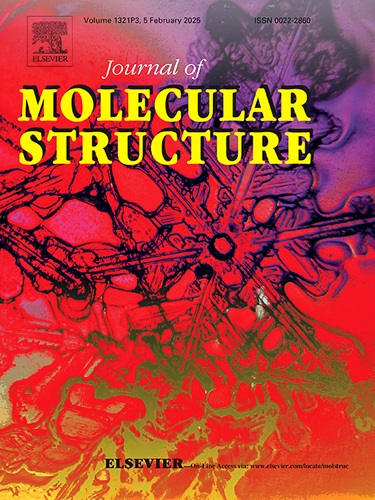The liquid crystalline and optical properties of chiral symmetrical dimers with two azo groups and 1,2-propanediol chiral moiety
IF 4
2区 化学
Q2 CHEMISTRY, PHYSICAL
引用次数: 0
Abstract
Six symmetric dimers were synthesised with 1,2-propanediol as the chiral center, azobenzene as the side arm, and substituents with different electron withdrawal ability groups ( C4H9O, C2H5O, CH3O, H, F and CF3) as the end groups. All dimers exhibit photoisomerism with E to Z isomerisation being much faster than Z to E. The end groups, which have different electron-donating and withdrawing abilities, significantly influence the liquid crystal and optical properties of the dimers. Specifically, E to Z photoisomerisation rates are faster for dimers with C4H9O, C2H5O, and CH3O end groups than for those with H, F, and CF3 end groups. The dimers with C4H9O, C2H5O and CH3O end groups display a monotropic chiral nematic (N*) phase on cooling, while those with H, F, and CF3 end groups do not exhibit liquid crystal properties. Notably, (CH3O-Azoben-C4)2-PD shows obvious selective reflectivity in the visible light range on cooling. Using short alkyl chains (CH3O) as terminal groups reduces the melting and crystallisation temperature and weakens the alternating arrangement of high and low polarisability, which is conducive to liquid crystal phase formation.
求助全文
约1分钟内获得全文
求助全文
来源期刊

Journal of Molecular Structure
化学-物理化学
CiteScore
7.10
自引率
15.80%
发文量
2384
审稿时长
45 days
期刊介绍:
The Journal of Molecular Structure is dedicated to the publication of full-length articles and review papers, providing important new structural information on all types of chemical species including:
• Stable and unstable molecules in all types of environments (vapour, molecular beam, liquid, solution, liquid crystal, solid state, matrix-isolated, surface-absorbed etc.)
• Chemical intermediates
• Molecules in excited states
• Biological molecules
• Polymers.
The methods used may include any combination of spectroscopic and non-spectroscopic techniques, for example:
• Infrared spectroscopy (mid, far, near)
• Raman spectroscopy and non-linear Raman methods (CARS, etc.)
• Electronic absorption spectroscopy
• Optical rotatory dispersion and circular dichroism
• Fluorescence and phosphorescence techniques
• Electron spectroscopies (PES, XPS), EXAFS, etc.
• Microwave spectroscopy
• Electron diffraction
• NMR and ESR spectroscopies
• Mössbauer spectroscopy
• X-ray crystallography
• Charge Density Analyses
• Computational Studies (supplementing experimental methods)
We encourage publications combining theoretical and experimental approaches. The structural insights gained by the studies should be correlated with the properties, activity and/ or reactivity of the molecule under investigation and the relevance of this molecule and its implications should be discussed.
 求助内容:
求助内容: 应助结果提醒方式:
应助结果提醒方式:


